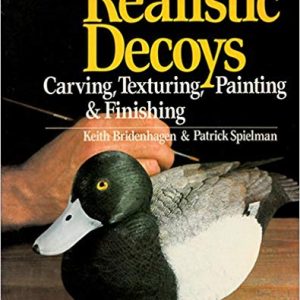PAPERBACK
$80.00
VIOLIN VARNISH A Plausible Re-creation of the Varnish Used by the Italian Violin Makers Between the Years 1550 and 1750, A. D. By JOSEPH MICHELMAN Published by JOSEPH MICHELMAN, Cincinnati, Ohio, U. S. A. 1946 Introduction PUBLICATION OF THIS BOOK is approached with a little temerity. After more than eight years of extensive research on the varnish used by the Italian Violin Makers from 1550 to 1750 A. D., it has not been possible to corroborate the results in the chemical laboratory. This is due entirely to the unavailability of samples of the varnish for confirmatory analysis. Violins made by the Italian masters of this period are so valuable and so scarce that a small sample of the varnish has not been procurable for experimental purposes. Therefore, synthesis must precede analysis …. and with no assistance from the latter. This, then, will explain the sub-title of this book as A Plausible Re-creation of the Varnish Used by the Italian Makers Between the Years 1550 and 1750 A. D. However, the results of this investigation are so logical and so deeply supported by a vast amount of convincing evidence, that publication of the book is in order. First, possibly the findings will be confirmed, or otherwise, by investigators who may be more fortunate in having access to material from authentic violins made by the old masters. Confirmatory chemical tests will be suggested it should be comparatively simple, especially through modern micro-analytical methods, to determine the presence of certain constituents in the varnish. Secondly, possibly the results will be suggestive to others so that the confirmed rediscovery of the so-called lost art of varnishing violins will eventually ensue. It is unfortunate that this policy of freely exchanging ideas and information has not generally existed. Almost every violin-maker has his own private formulas for varnishes, which he treasures highly and guards closely. The secret of the old Italian masters has defied discovery for nearly one hundred years, and any disclosures that will shed light on the mystery should be made. vi VIOLIN VARNISH Thirdly, the results may be interesting from a chemical stand point the literature investigated does not contain many references to similarly colored varnishes. The varnishes are perfectly transparent and many are exceedingly permanent, which may be of interest to paint and varnish chemists. Investigators in the realm of colloid chemistry may be interested in the organosols that will be discussed. If the results of this investigation are eventually confirmed, then it must follow that the varnish makers of medieval times produced Synthesized their own resins. The synthetic resin would then become a product of the 16th century and not belong exclusively to more recent years as hereto fore pre-supposed. Lastly, and most important of all, publication of these results should make freely and permanently accessible to violinists, and lovers of the instrument throughout the world, violins that satisfy the criteria that have been established for the instruments cellos and basses included of the old Italian makers. . . . The instruments of these masters are now two hundred to four hundred years old. Their violins are made entirely of wood held together only with glue and cannot be expected to withstand the ravages of time forever. . . . Then too, better instruments should be made more universally available to violinists students as well as amateurs and professional players. Deserving players are too frequently deprived of the advantages of good quality instruments and are compelled to use ill-sounding, unresponsive violins with a resulting decrease in interest and advancement. Further improvement in the quality of modern violins is desired, and that improvement should approach the standards established by the old Italian masters. The subject matter of this book will of necessity become technical, especially when the theoretical aspects are considered…
| Weight | .75 lbs |
|---|---|
| Dimensions | 8.5 × 5.5 × .375 in |
| QTY | 1 ea |



